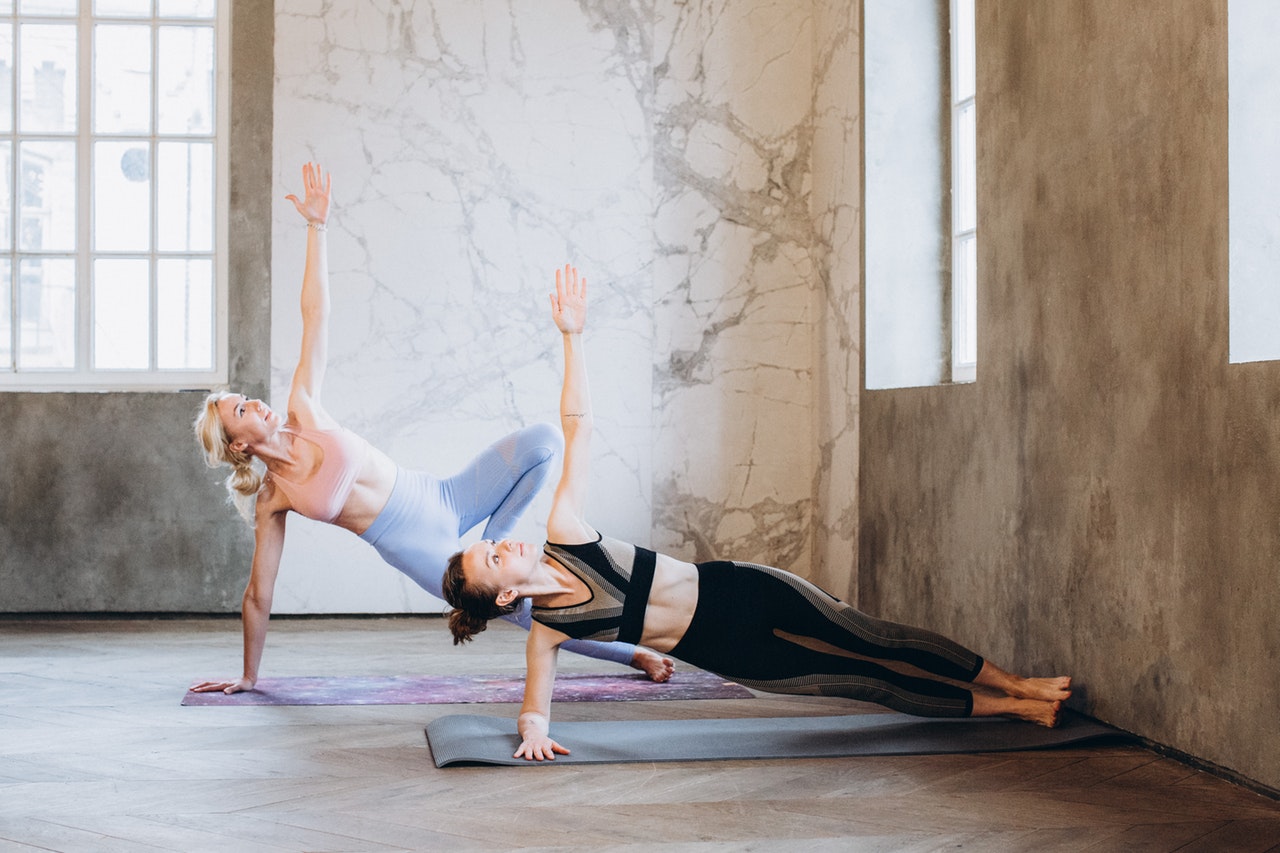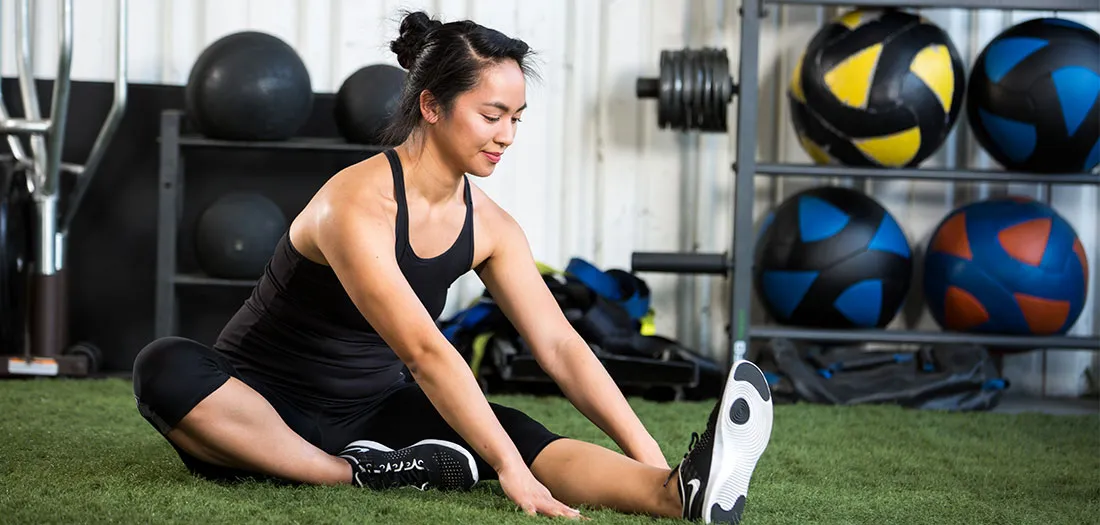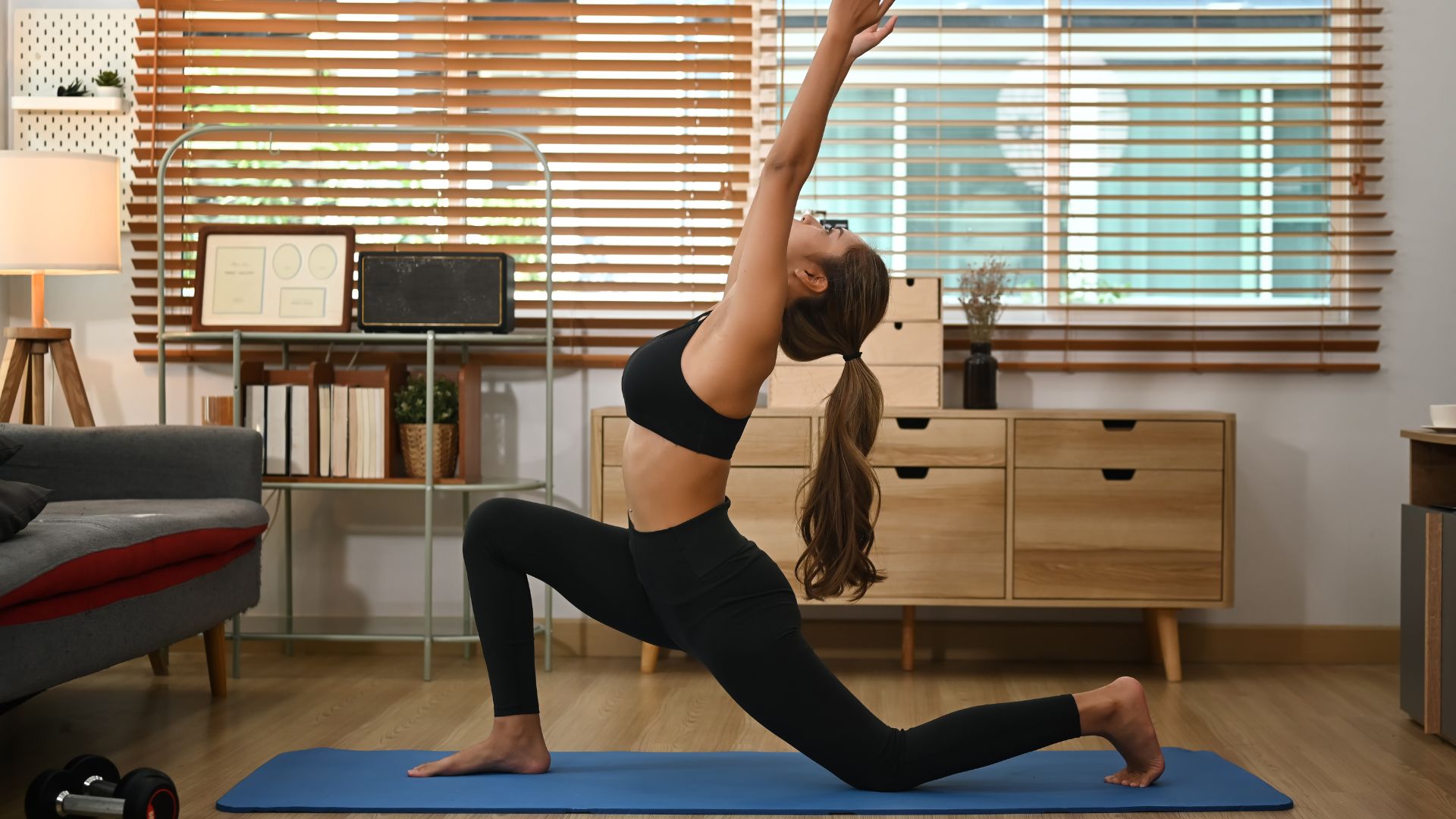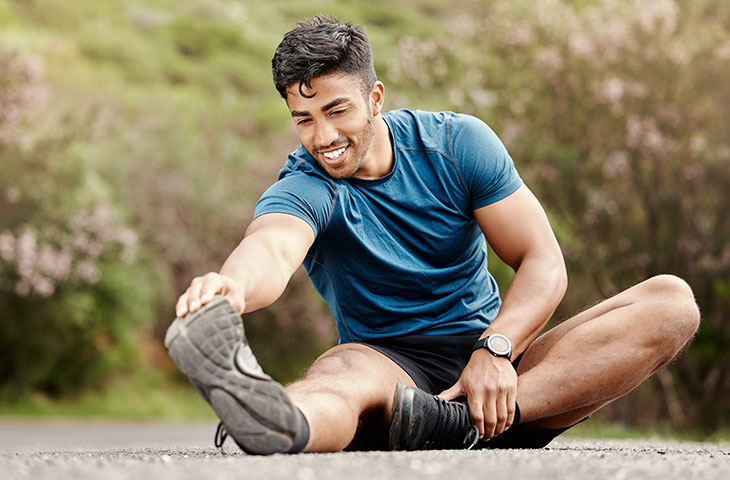Hey there, picture this: It’s a crisp Saturday morning, and I’m lacing up my sneakers for a jog around the neighborhood. Back in my early twenties, I thought pounding the pavement was all it took to stay fit. Boy, was I wrong. One day, mid-stride, my calf decided to throw a tantrum—tight as a guitar string, it seized up so bad I hobbled home like a penguin on ice. That embarrassing limp? It was my wake-up call to stretching. Fast forward a decade, and now I weave flexibility work into my days like it’s coffee—non-negotiable. If you’re feeling that same creak in your joints or just want to move smoother through life, stick with me. We’ll unpack the types of stretches that actually work and exercises that’ll have you bending like a pro, minus the drama.
Why Flexibility Matters More Than You Think
You know that satisfying pop when you crack your knuckles? Imagine that freedom across your whole body. Flexibility isn’t just for yogis or gymnasts; it’s the unsung hero keeping everyday moves—like grabbing the remote off a high shelf or chasing after your kid—pain-free and effortless.
From what I’ve learned through trial and error (and a few too many foam roller sessions), building flexibility boosts your posture, sharpens balance, and even eases stress by loosening those tension knots we all carry. It’s like giving your muscles a gentle hug after they’ve been hunched over a desk all day.
Think of it as investing in your body’s future self. Skip it, and you risk tweaks that sideline you; embrace it, and you’ll feel lighter, stronger, and yeah, a bit more invincible.
The Core Benefits of Flexibility Training
Diving into flexibility training feels like unlocking a secret level in your favorite game—suddenly, everything flows better. I’ve chatted with trainers and scoured studies, and the perks stack up like this: better joint health, fewer injuries, and even improved athletic performance.
One buddy of mine, a weekend warrior soccer player, swore by his post-game stretches after pulling a hamstring one too many times. Now? He’s scoring goals without the wince. It’s not magic; it’s science—stretching increases blood flow, which nourishes muscles and keeps them supple.
And here’s a light-hearted nudge: Ever tried tying your shoes in a rush and ended up in a comedy of errors? Good flexibility turns those fumbles into fluid motions, saving your dignity and your back.
Understanding the Main Types of Stretches
Let’s break down the stretch squad—each has its vibe and sweet spot in your routine. Static stretches are your chill friends: hold a pose to deepen that lengthening feel. Dynamic ones? They’re the party starters, swinging limbs to mimic your workout moves.
I’ve fallen in love with both after experimenting. Static post-run calms my buzzing legs; dynamic before a hike wakes everything up without the stiffness. Ballistic stretches add bounce (literally), while PNF throws in some contraction magic for advanced gains.
Picking the right type boils down to timing—warm-up with dynamic, cool down with static. It’s like choosing the perfect playlist for the mood; get it right, and your body’s singing.
Static Stretching: The Classic Hold
Static stretching is like savoring a good book—you settle in, breathe deep, and let it sink in. Hold for 30 seconds or so, feeling that gentle pull without pushing into pain.
I remember my first real static session after a long desk week; my hamstrings thanked me with zero next-day soreness. It’s gold for recovery, targeting spots like your calves or shoulders.
Pro tip: Pair it with deep breaths to melt away tension—your mind gets a mini-vacation too.
Dynamic Stretching: Move It to Groove It
Dynamic stretches are all motion, no freeze-frame. Think leg swings or arm circles that rev your engine for action. They’re perfect pre-workout, boosting circulation without overextending.
Once, before a pickup basketball game, I swapped my usual static bends for dynamic lunges. Result? Quicker pivots and zero pulls—felt like I had springs in my shoes.
Keep ’em controlled; it’s about warming the muscles, not auditioning for Cirque du Soleil.
Ballistic Stretching: Bouncy But Bold
Ballistic stretching brings the bounce, using controlled swings to push limits—like gentle toe touches with a little rebound. It’s old-school, favored by dancers for explosive power.
I tried it lightly during a flexibility workshop and whoa—the range boost was instant, but so was the “easy there” reminder from my trainer. Use sparingly to avoid tweaks.
It’s not for newbies; warm up first, or you’ll trade flexibility for a funny walk.
PNF Stretching: Contract and Conquer
PNF, or proprioceptive neuromuscular facilitation, is the brainy one: contract a muscle, relax, then stretch deeper. Often with a partner, it’s like negotiating with your body for extra give.
A physical therapist introduced me to it after my calf fiasco—hold, push against resistance, release. My range jumped overnight, but it takes focus.
Ideal for rehab or athletes; just don’t skip the warm-up, or it’s contract… and regret.
Top Flexibility Exercises for Beginners
Starting out? Keep it simple—no need for pretzel poses on day one. These exercises target big muscle groups with minimal fuss, building a base you can grow from.
I wish someone handed me this list years ago; my early attempts were all enthusiasm, zero form. Now, I swear by them for that “ahh” feeling after a long day.
Aim for 10-15 minutes, three times a week—consistency beats intensity every time.
- Neck Rolls: Gently tilt your head side to side, then circle slowly. Loosens that desk hunch we all hate.
- Seated Forward Bend: Sit tall, hinge at hips, reach for toes. Hits hamstrings without the floor drama.
- Standing Quad Pull: Balance on one leg, grab the ankle behind you. Quad relief in seconds.
- Cat-Cow Pose: On all fours, arch and round your back. Spine love for better posture.
- Butterfly Stretch: Soles together, knees out—inner thighs say thank you.
For visuals, check out this Mayo Clinic guide on basic stretches—it’s a game-changer.
Building a Beginner Routine: Step by Step
Crafting your first routine is like plotting a road trip: pick scenic stops, pace yourself, and enjoy the ride. Start with a quick walk to warm up, then flow through 5-7 exercises.
My go-to? Mornings with coffee in hand—neck rolls into forward bends, ending with quads. It sets a loose-limbed tone for the chaos ahead.
Track progress in a journal; you’ll surprise yourself how those “impossible” reaches become no-brainers.
Advanced Flexibility Exercises to Level Up
Once basics feel like old hat, amp it up with these. They’re for when you crave that deeper stretch, like threading the needle for shoulders or pigeon pose for hips.
I added them after six months of newbie work—suddenly, my yoga flow went from clunky to confident. It’s rewarding, but listen to your body.
Incorporate twice weekly; pair with strength moves to avoid wobbles.
| Exercise | Target Area | Hold/Reps | Pro Tip |
|---|---|---|---|
| Pigeon Pose | Hips/Glutes | 30-60 sec/side | Use a blanket for knee comfort—ah, sweet relief. |
| Thread the Needle | Shoulders/Upper Back | 20-30 sec/side | Breathe out the knots; feels like unraveling a tangled necklace. |
| Lizard Lunge | Hips/Quads | 45 sec/side | Low lunge variation—deepens the hip opener without strain. |
| Seated Spinal Twist | Spine/Core | 30 sec/side | Gentle rotation; great for desk warriors like me. |
| Downward Dog to Plank | Full Body | 5-10 flows | Builds heat—transition smooth for that full-body buzz. |
Comparing Stretch Types: Which Fits Your Goals?
Ever wonder if static beats dynamic for your spin class? Let’s compare—it’s like picking shoes for the occasion: comfy for lounging, supportive for running.
Static shines for cool-downs, easing soreness; dynamic preps for power sports. Ballistic? For explosive needs like sprinting. PNF edges out for quick gains but needs a buddy.
From my experiments, mix ’em: dynamic mornings, static evenings. Tailor to you—runners love leg-focused, yogis go full-body.
| Type | Best For | When to Use | Potential Drawback |
|---|---|---|---|
| Static | Recovery, Daily Mobility | Post-Workout | Can sap power if pre-exercise |
| Dynamic | Warm-Up, Performance | Pre-Activity | Less deep stretch for tight spots |
| Ballistic | Explosive Sports | Advanced Warm-Up | Injury risk if uncontrolled |
| PNF | Rapid Improvement | With Partner | Intense; not solo-friendly |
Pros and Cons: Static vs. Dynamic Stretching
Static: Pros—deep relaxation, easy solo, boosts long-term range. Cons—might dull explosive power pre-workout.
Dynamic: Pros—mimics moves, ups heart rate, injury-proof warm-up. Cons—needs space, less chill for winding down.
I’ve flipped between them; static for my post-hike bliss, dynamic for game days. No one’s all bad—it’s about balance.
Where to Get Flexibility Training Resources
Hunting gear or guidance? Local gyms offer classes—yoga studios are goldmines for beginners. Online, apps like Down Dog or Peloton deliver on-demand flows right to your phone.
I snagged a cheap yoga mat from Amazon and never looked back; pair it with free YouTube channels for zero excuses. For personalized tweaks, a PT session via Cleveland Clinic’s resources is worth every penny.
Pro move: Join a community—nothing beats group energy for sticking with it.
Best Tools for Flexibility Training
Tools turn solo stretches into spa sessions. Resistance bands add gentle pull; foam rollers knead out knots like a pro masseuse.
My strap set? Lifesaver for hamstring reaches without straining my back. Blocks and bolsters support deeper poses safely.
Budget-friendly starters: A $10 band pack from REI or a basic roller—invest once, stretch forever.
Common Mistakes to Dodge in Your Stretch Game
Ah, the pitfalls—I’ve tripped over most. Bouncing into stretches? Big no; it tightens muscles faster than you can say “ow.” Skipping warm-ups leaves cold muscles cranky and prone to pulls.
Holding breath during a hold? That’s tension city—breathe to release. And ignoring pain signals? Rookie move; ease off at discomfort’s edge.
One time, I powered through a twinge—hello, week of ice packs. Lesson learned: Listen up, body.
People Also Ask
Got questions bubbling up? These are straight from the search wilds—real curiosities folks type into Google. I’ll keep answers snappy and real.
How Often Should You Stretch for Flexibility?
Aim for 2-3 sessions weekly, 10-15 minutes each, hitting major groups. Daily quickies work too if life’s hectic.
I stretch most mornings—keeps me limber without burnout. Consistency trumps marathon sessions; build slow for lasting gains.
What Is the Best Type of Stretching for Flexibility?
Static for depth, dynamic for prep—mix ’em based on your day. Beginners? Start static post-warm-up.
From my routine, static wins for evenings; it’s that cozy wind-down. Tailor to goals: runners dig dynamic legs.
Can Stretching Make You Taller?
Not really—stretches improve posture, which can add an inch visually by straightening your spine. No height hacks here.
I gained “height” post-flex routine by ditching my slouch—felt taller, moved prouder. It’s illusion with real perks.
Is Stretching Before or After Workout Better?
After for static recovery; before, go dynamic to prime muscles. Never cold-static—it’s a pull magnet.
My pre-jog arm circles? Game-changer. Post? Hamstring holds melt the burn.
FAQ: Your Burning Stretch Questions Answered
Wrapping with these gems—pulled from chats with friends and online forums. Short, sweet, and straight-talk.
Q: How long to hold a stretch without hurting?
A: 30 seconds tops for most; ease in till tension hums, not screams. I count breaths—five in, five out keeps it chill.
Q: Stretching daily—overkill or gold?
A: Gold if gentle; overkill if forcing it. My daily five-minute flow? Keeps me oiled without fatigue.
Q: Best stretches for desk-job back pain?
A: Cat-cow and spinal twists—10 reps each. Saved my sanity during remote work marathons.
Q: Can kids do these exercises?
A: Absolutely, modified for fun—think animal poses. My niece’s “downward dog” giggles? Priceless intro to moving well.
Q: Yoga vs. basic stretches—which wins?
A: Yoga for mind-body bonus; basics for quick hits. I blend: Yoga weekends, stretches daily. Both win.
There you have it—your roadmap to a bendier, happier you. Remember that calf cramp from years back? It’s a distant laugh now, thanks to these habits. Grab your mat, start small, and watch how your body thanks you. What’s your first stretch gonna be? Drop a note—I’d love to hear your story. Keep moving, friend.




